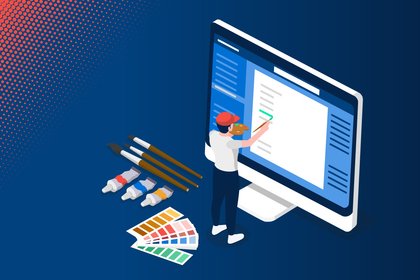Easier, faster, more reliable – taking your technical writing to a new level with automation
Are you already using SCHEMA ST4 in your technical writing department? Do you have the typical challenges under control, including increasing demand for variants and translations, videos as an indispensable part of your content, more and more digital information channels, ST4 directly integrated into your company’s system environment? Congratulations – you’ve certainly achieved a great deal!

But this is by no means the end of the story, as automation features open up a whole new world to you in SCHEMA ST4. They also bring the opportunity to make your technical writers’ work easier, more efficient and more reliable in the long term, and perhaps even revolutionize it in parts.
So what’s automation in ST4 all about? And how can you benefit from it?
Letting SCHEMA ST4 handle time-consuming clicks automatically
Keeping things easy for you or making them easier starts with the fact that ST4’s automation functions allow you to combine any sequence of mouse clicks into a single action. For example, when labelling nodes with characteristics or when compiling translation packages. Automation can quickly reduce the number of clicks required for repetitive steps by up to 90 percent.
It’s clear that automation is the key to you systematically saving time, and therefore conserving the resources of your technical writing team and creating more freedom for new tasks.
What’s more, the reliability of your work processes also increases. There are no careless mistakes when an automated procedure does the work in ST4. And even challenging tasks can be taken on by people who don’t have a grasp of all the underlying processes, or perhaps only occasionally complete tasks in ST4.
Adhering to defined work processes
Do you follow a defined work process in your technical writing department? Perhaps you also need to demonstrate compliance with this process? ST4 assists you with this. You can use Automation Designer to model sequences of work steps via a graphical interface to create one sophisticated step – including all the necessary tasks, actions and, of course, dependencies.
A typical example of this would be an approval workflow. This ensures that approvals are obtained from all the required departments in the defined order. First the content approval from a proofreader, then the technical approval from a process participant in the development team. The translation workflow can only start once the approval workflow has been completed.
No step is forgotten. Thanks to a personalised task list, everyone knows when they are needed. And the tasks are performed using dialogue boxes that Automation Designer generates automatically.
Integrating people and systems easily
Automation also works beyond the boundaries of ST4, opening up completely new possibilities for integrating ST4 as a component content management system into your company processes.
You can even integrate process participants who do not actually work with ST4, such as by combining it with Slim Client. See our post on translation management for a use case of how you can use this external interface very effectively for translating data sheets.
Using automation, you can also assign tasks to assistance systems such as Congree or Across via https and exchange data with them. Find out how this can work using Congree as an example in our post on automation and terminology quality.


